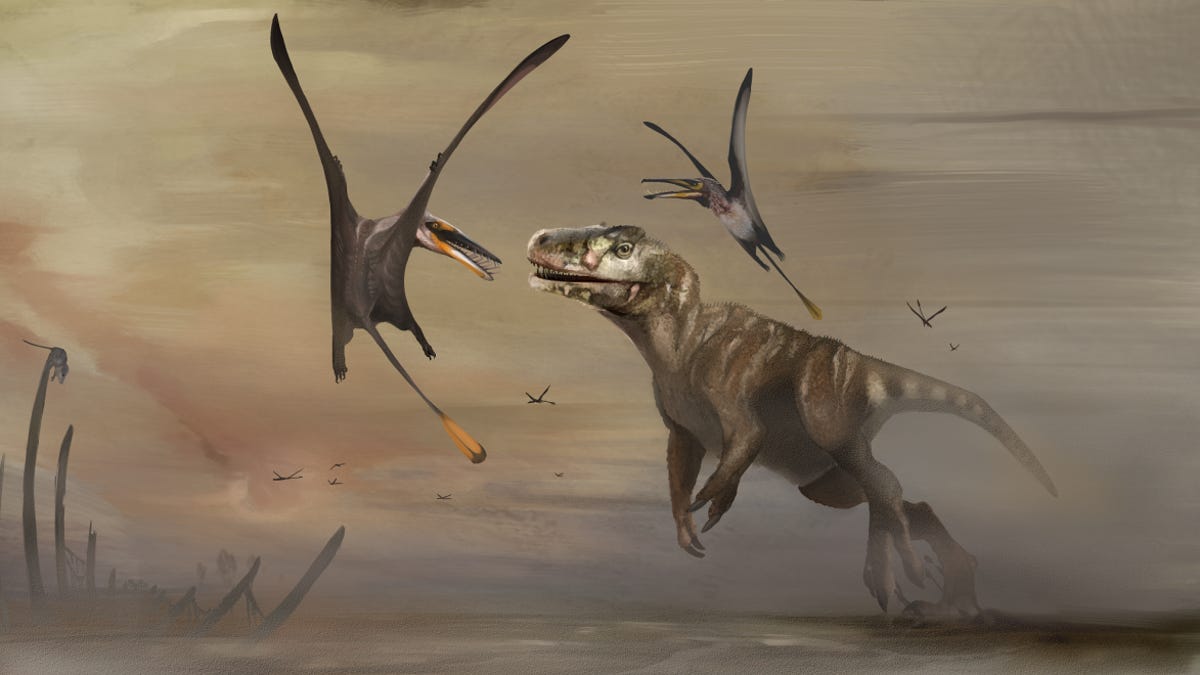'Superbly Preserved' Fossil of Ancient Flying Reptile Astounds Scientists
They're calling it the world's largest Jurassic pterosaur.
Dearc sgiathanach was an absolute unit among Jurassic pterosaurs. Pterosaurs, also known as pterodactyls, were flying reptiles that lived alongside dinosaurs. A newly discovered fossil specimen discovered on the Isle of Skye in Scotland is the largest yet found from its time period, with an estimated wingspan of over 8 feet (2.5 meters). It's providing new insights into the creatures' history.
You might wonder, "How do I pronounce the Gaelic name?" The University of Edinburgh offered a guide for the second part -- "jark ski-an-ach" -- in a statement on Tuesday.
Researchers discovered the fossil in 2017 during an excavation funded by the National Geographic Society. The reptile lived 170 million years ago, which makes its state of preservation all the more remarkable. Dearc had good eyesight and would have snacked on fish. The fossil still shows shiny enamel on its teeth.
University of Edinburgh Ph.D. student Natalia Jagielska shows the fossil of Dearc sgiathanach, a newly described species of pterosaur.
"Dearc is a fantastic example of why paleontology will never cease to be astounding," said University of Edinburgh Ph.D. student Natalia Jagielska. "Pterosaurs preserved in such quality are exceedingly rare and are usually reserved to select rock formations in Brazil and China. And yet, an enormous superbly preserved pterosaur emerged from a tidal platform in Scotland."
Jagielska is lead author of a paper on the pterosaur published in the journal Current Biology this week.
While larger pterosaurs existed, Dearc is teaching scientists something new about what they looked like during the Jurassic. "Dearc is the biggest pterosaur we know from the Jurassic period and that tells us that pterosaurs got larger much earlier than we thought, long before the Cretaceous period when they were competing with birds, and that's hugely significant," said paleontologist Steve Brusatte, a co-author of the paper.
This study is just the beginning for Dearc, which was a juvenile when it died. Jagielska plans to investigate the fossil further to learn more about its lifestyle and how it flew. It's a rare discovery, and it will keep on giving to science.


